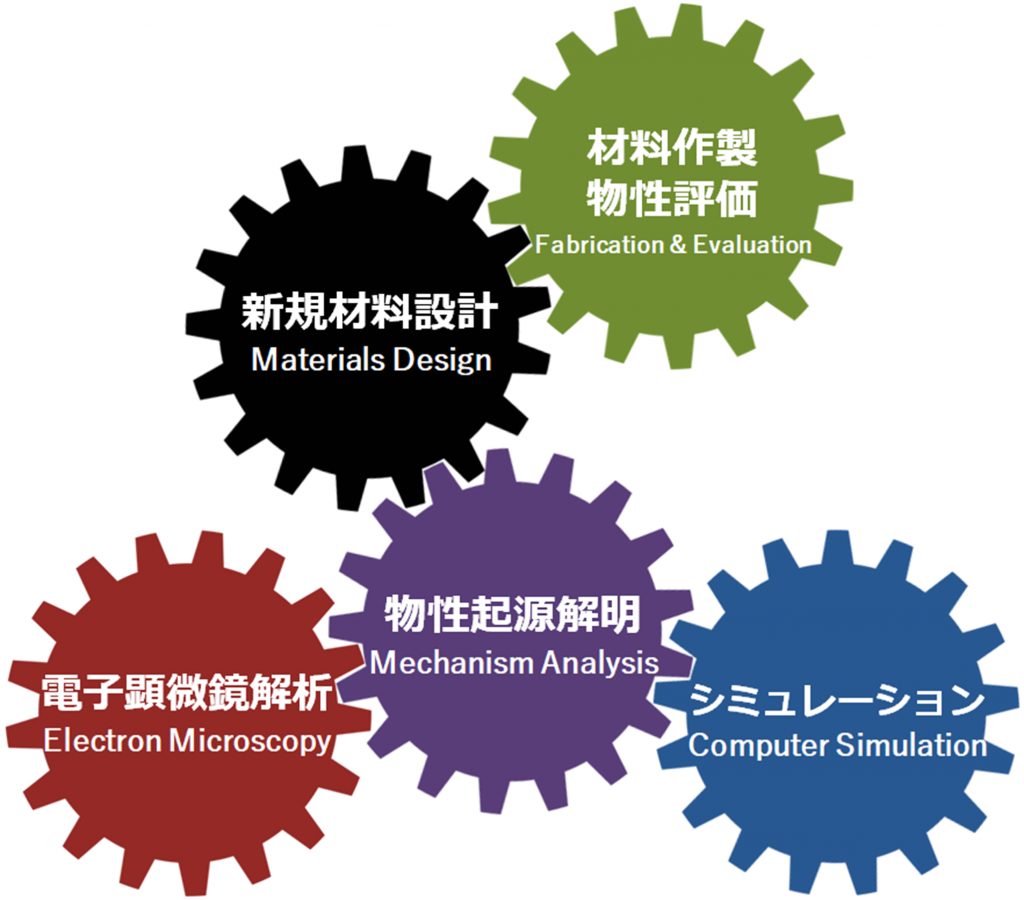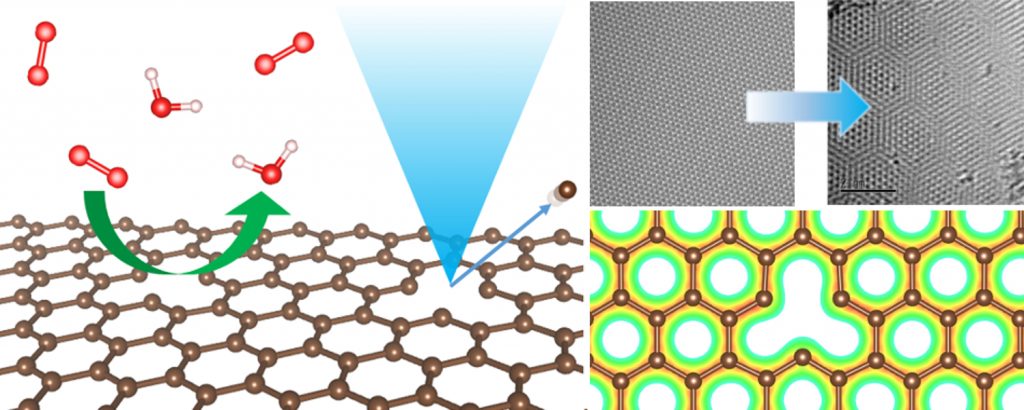A highly efficient energy conversion material has been studied through atomic structure analysis and property assessment in extended range between nanoscopic and macroscopic dimension, employing high-resolution analytical electron microscopy and computer simulations. Our study aims at new functional materials design to contribute efficient use of various energy resources. Correlation among atomic structure, electronic structure and property of the interfaces, surfaces and atomic-scale functional sites of materials is intensively studied. (Fig. 1)
 Fig. 1
Fig. 1
(1) Nanometer-order resolution measurements of optical properties by STEM-EELS
Electron energy-loss spectroscopy (EELS) combined with electromagnetic simulations is one of the powerful tools for analyzing the optical properties of very small regions of various energy conversion materials. The spherical aberration-corrected STEM with a monochromator gun enables us to reveal the dielectric properties of nanostructured materials.
(2) Three-dimensional distribution analysis of dopants in ceramic phosphors
Spatial distribution of rare-earth dopants in ceramic phosphors dominates their emission behaviors. We performed the three-dimensional distribution analysis of Ca and Eu dopants in Ca-α-SiAlON:Eu2+ using through-focus HAADF- STEM with multi-slice simulations and statistical analysis.
(3) Development of oxygen sorption materials
STEM-EELS gives the information of atomic structure including element mapping and atomic-scale chemical bonding states. We clarify the oxygen sorption mechanism of ceramic materials. Ab initio calculations are also performed to obtain the detailed information of local chemical bonding states.
(4) Computational design of hydrogen permeation barrier coatings
Suppression of hydrogen embrittlement in materials is one of the key technologies for hydrogen society. We investigated the hydrogen absorption and diffusion mechanism in the ceramic materials, and design new hydrogen permeation barrier coatings using ab initio calculations.
(5) Computational design of Long-life catalyst
Long-life fuel cell electrode catalysts are required to realize hydrogen society. We revealed the degradation mechanism of catalysts, and design Long-life catalysts based on first-principles calculations. We also fabricate the designed catalysts using the electron beam irradiation. (Fig. 3) Recently, we also focued on the synthesis and characterization of new MAX-phase materials and MXene.

Fig. 3
